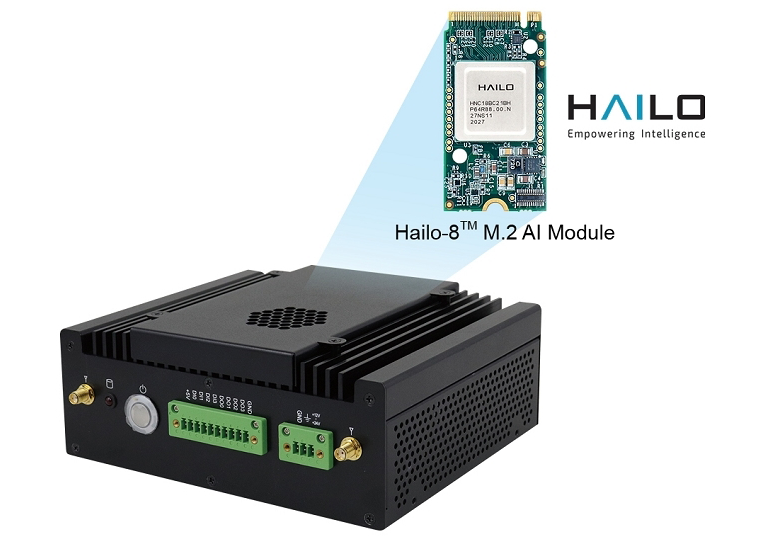Building a Lenovo laptop was once a niche pursuit, accessible only to enthusiasts with advanced technical expertise. However, the availability of detailed online guides, pre-configured components, and support communities has democratized the process, making it more accessible to a wider audience. The lenovo build your own laptop approach offers potential cost savings and customization, but it’s crucial to acknowledge the inherent risks and challenges involved.
Toc
Benefits of Building a Lenovo Gaming Laptop

If you’re considering a Lenovo build your own laptop project, there are several compelling reasons to take the plunge:
Cost-effectiveness
For example, a pre-built Lenovo Legion 5 Pro with a similar configuration to a custom-built laptop could cost around $1,500. However, by sourcing components individually, you could potentially assemble a comparable laptop for $1,200 to $1,300, saving you a significant amount of money. However, it’s important to note that building a laptop requires a significant investment of time and effort. You’ll need to research components, ensure compatibility, and perform the assembly process yourself. Additionally, there’s always the risk of encountering compatibility issues or making mistakes during the build.
Customization
Beyond choosing individual components, some barebones chassis offer customization options such as different color schemes, keyboard backlighting, and even the ability to swap out the display panel for a higher refresh rate or resolution. This allows you to create a truly unique gaming laptop that perfectly matches your preferences. While customization offers a wide range of options, it’s not always possible to find the exact components you want. Some components may be discontinued or unavailable, and the availability of specific components might be limited by the manufacturer’s design choices for the barebones chassis.
Performance
When it comes to performance, building a Lenovo gaming laptop grants you the ability to handpick top-tier components tailored to your specific gaming needs, potentially surpassing pre-built systems. By selecting high-performance CPUs, GPUs, RAM, and storage, you can craft a machine that effortlessly handles demanding games and tasks. Moreover, the flexibility to incorporate advanced cooling solutions enhances thermal management, ensuring sustained peak performance and prolonging component lifespan. However, achieving optimal performance requires meticulous attention to detail during the assembly process to avoid bottlenecks or overheating issues. It’s essential to balance power and efficiency, adapting to evolving technology trends and game requirements while maintaining a synergistic build configuration.
Upgradability
One of the major advantages of building your own Lenovo gaming laptop is the enhanced upgradability compared to pre-built models. With a custom-built laptop, you have the liberty to upgrade individual components as new technology becomes available or as your needs evolve. For instance, if a more powerful graphics card or a larger SSD is released, you can simply swap the older component for the new one, extending the lifespan of your machine and ensuring it remains competitive with the latest gaming systems. This flexibility can be particularly cost-effective in the long run, as you won’t need to replace the entire system as often as you might with a pre-built laptop. However, it is crucial to keep track of compatibility requirements and ensure that new parts are supported by your existing build. Additionally, the process might still require a certain level of technical knowledge and expertise, which could be a barrier for some users. Nonetheless, the ability to continually enhance performance and features keeps your machine both relevant and powerful as gaming and software demands advance.
Choosing the Right Components for Your Lenovo Build Your Own Laptop

To successfully execute your Lenovo build your own laptop project, you’ll need to gather several critical components.
Barebones Lenovo Chassis
The foundation of your gaming laptop is the barebones chassis. Ensure you select one specifically designed for gaming, as it will need to support powerful CPUs, dedicated graphics cards, and adequate RAM. Check sites like eBay or Alibaba, or even Lenovo’s website for options. Mini-ITX motherboards, known for their compact size, are gaining popularity in gaming laptops. These motherboards offer powerful performance in a smaller form factor, allowing for more compact and portable gaming laptops. This trend is driving innovation in chassis design and component compatibility.
Processor (CPU)
The processor, or CPU, is a critical component that significantly influences gaming performance. Opt for either Intel or AMD, with a focus on models that offer high core counts and clock speeds. Intel Core i7 and i9 processors are popular choices, while AMD Ryzen 7 and 9 series processors are also excellent for gaming.
Graphics Card (GPU)
Your GPU is arguably the most important component for a gaming laptop. Look for dedicated graphics cards from NVIDIA or AMD that have enough VRAM to handle modern games at high settings. The NVIDIA GeForce RTX 30 series, released in September 2020, and the AMD Radeon RX 6000 series, launched in November 2020, are top contenders for gaming laptops.
Memory (RAM)
For a smooth gaming experience, aim for at least 16GB of high-speed DDR4 (running at 2133MHz or higher) or DDR5 (with speeds starting at 4800MHz) RAM. This capacity allows for efficient multitasking and prevents bottlenecks during intense gaming sessions. If you plan to play demanding titles or multitask heavily, consider upgrading to 32GB.
Storage (SSD)
An NVMe SSD, renowned for its blazing-fast speeds, is essential for achieving rapid loading times, particularly for your operating system and demanding games. For additional storage, you might also incorporate a secondary HDD for media and less frequently played games.
Cooling System
Gaming generates a lot of heat, making a robust cooling system vital. Consider liquid cooling solutions, such as those offered by Corsair or Cooler Master, to keep temperatures in check during extended gaming sessions. This will help maintain optimal performance and prolong the lifespan of your components.
Wireless Card
A reliable wireless card is essential for maintaining a strong internet connection. Opt for a Wi-Fi 6 card to ensure you can take advantage of the fastest available wireless speeds, especially beneficial for online gaming.
Other Components
Don’t forget about peripherals! A quality gaming keyboard, mouse, and headset can enhance your overall gaming experience.
Assembling Your Lenovo Gaming Laptop

Now that you have your components, it’s time to assemble your Lenovo build your own laptop. Here’s a step-by-step guide:
Prepare the Workspace
Start by ensuring your workspace is clean, organized, and free from any static electricity. It’s important to work on a non-static surface, as static can damage sensitive components. Using a static wrist strap will help prevent any electrostatic discharge that could potentially harm your components during the assembly process. Additionally, make sure you have good lighting and all necessary tools within reach to make the assembly smoother.
Install the CPU
Begin by carefully installing the CPU into the motherboard socket. Take your time to align the CPU pins with the socket, ensuring it is oriented correctly before gently placing it into the socket. Once properly aligned, secure the CPU in place by locking the lever down. This is a crucial step, as a misaligned CPU can lead to performance issues or even damage.
Install the Cooling System
Next, attach the cooling solution to the CPU. Depending on your choice, this could be a heatsink and fan assembly or a more advanced liquid cooling setup. If you are using thermal paste, apply a small amount to the center of the CPU before attaching the cooler. Ensure that the cooling solution is mounted securely to prevent overheating during operation.
Install RAM
Insert the RAM modules into the designated slots on the motherboard, ensuring they click securely into place. Make sure to consult your motherboard manual for the optimal RAM configuration, as certain motherboards may require specific slots to be populated first for dual-channel memory operation. This step is crucial for maximizing system performance.
Install Storage
Secure your SSD and HDD into their respective bays. For SSDs, you may need to use mounting screws or brackets, while traditional HDDs generally have a more straightforward installation. Make sure to connect any necessary cables for power and data transfer; this often involves SATA cables for SSDs and HDDs, ensuring a reliable connection for data access.
Install the Graphics Card
Install the dedicated graphics card into the appropriate PCIe slot on the motherboard, ensuring it is securely fastened. You may need to remove a metal bracket from the case to accommodate the card. Once inserted, use screws to secure the graphics card to the case, ensuring stability during use. This component is vital for gaming or graphics-intensive tasks, so ensure it is properly seated.
Install the Wireless Card
Connect your wireless card to its designated slot on the motherboard. Depending on the type of wireless card, you may need to attach small antennas to the back. Make sure it is securely installed to ensure a strong and stable wireless connection once your system is up and running.
Connect Cables
Carefully connect all necessary cables, including power and data cables. Take your time to ensure everything is connected properly, as loose connections can lead to system instability. It’s helpful to route cables neatly through the case to improve airflow and aesthetics. Double-check that each connection is secure before proceeding to the next step.
Secure Components
Double-check that all components are securely installed and connected before closing up the chassis. Inspect your work to ensure no tools or extra parts are left inside the case. Once you are confident everything is in place, close the case and secure it with screws. This final check will help ensure a smooth boot-up and reliable performance of your newly assembled system.
Installing the Operating System

With your laptop assembled, it’s time to install the operating system:
Create a Bootable USB Drive
Start by downloading the Windows installation files from the official Microsoft website. Once you have the files, use tools like Rufus or the Windows Media Creation Tool to create a bootable USB drive. With Rufus, simply select the USB drive, choose the downloaded ISO file, and click on “Start” to initiate the process. This will format the USB and copy the necessary files to make it bootable.
Boot from USB
After creating the bootable USB drive, you need to adjust the boot order in your BIOS settings. Restart your laptop and enter the BIOS setup—this is usually done by pressing a specific key like F2, DEL, or ESC during startup. Once in the BIOS, navigate to the boot menu and set the USB drive as the primary boot device. This ensures that your laptop will attempt to boot from the USB drive first when it powers on.
Install Windows
With the USB drive set up and your laptop configured to boot from it, follow the on-screen instructions to install Windows on your new laptop. This process typically involves selecting your language preferences, accepting the license agreement, and choosing the installation type. Make sure to also install the necessary drivers for your components after Windows is installed, including the graphics card, chipset, and any other peripheral devices. These drivers are crucial for ensuring that your hardware functions optimally and can be found on the manufacturers’ websites.
Troubleshooting and Support

Building your own laptop can be a fulfilling experience, but challenges can arise. Here are some common issues and solutions:
Compatibility Issues
Before purchasing components, it is crucial to ensure that they are compatible with your barebones chassis and motherboard. This involves checking the dimensions of the components, such as the size of the graphics card and the height of the CPU cooler, to ensure a proper fit. It’s also important to confirm that the power supply can handle the wattage requirements of all your components. Always refer to the manufacturer’s specifications for each component and conduct thorough research, including reading user reviews and compatibility lists, to avoid any costly mistakes.
Overheating
Monitoring CPU and GPU temperatures during gaming sessions is essential for maintaining optimal performance and longevity of your hardware. High temperatures can lead not only to performance throttling but also to permanent damage. If you notice that the temperatures are consistently exceeding safe limits, consider adjusting fan curves using software to increase cooling efficiency or upgrading your cooling solution entirely. Options such as liquid cooling systems or high-performance air coolers can significantly improve thermal management, ensuring your components run smoothly.
Warranty
While your DIY laptop may not come with the same warranty coverage as a pre-built model, it’s wise to consider investing in an extended warranty or insurance for added peace of mind. This can cover repairs or replacements in case of manufacturing defects or unforeseen failures. Look into the terms of any extended warranty options, as they may offer coverage for specific parts and accidents. Having a solid warranty can save you significant expenses in the long run, allowing you to focus on enjoying your laptop without worry.
Seeking Professional Assistance
If you encounter technical difficulties during your DIY journey, don’t hesitate to seek help from online forums, DIY communities, or local computer repair shops. Engaging with online communities can provide you with a wealth of knowledge and support, as experienced members are often willing to share their insights and solutions. Additionally, local repair shops can offer hands-on assistance and troubleshooting expertise that might be invaluable in addressing any issues you encounter. Remember, seeking help not only saves you time but can also enhance your understanding of the technology involved.
Conclusion
Building your own laptop is an immensely rewarding endeavor that allows you to tailor a powerful machine to your specific needs and preferences. The process teaches valuable skills in hardware assembly, promotes understanding of the components that constitute a computer, and grants you the satisfaction of creating something uniquely your own. While challenges are inevitable, the resources available, from online tutorials to community forums, provide a wealth of information to guide you through the build process. Moreover, the skills you gain from building a DIY laptop are transferable, enhancing your capability to troubleshoot and upgrade your machine or others in the future. Embracing this project will not only result in a high-performance laptop crafted to your liking but also an enriched knowledge of the technological landscape.










